Shortest Path Algorithm in Computer Network
Last Updated :
14 Feb, 2024
In between sending and receiving data packets from the sender to the receiver, it will go through many routers and subnets. So as a part of increasing the efficiency in routing the data packets and decreasing the traffic, we must find the shortest path. In this article, we are discussing the shortest path algorithms.
What is Shortest Path Routing?
It refers to the algorithms that help to find the shortest path between a sender and receiver for routing the data packets through the network in terms of shortest distance, minimum cost, and minimum time.
- It is mainly for building a graph or subnet containing routers as nodes and edges as communication lines connecting the nodes.
- Hop count is one of the parameters that is used to measure the distance.
- Hop count: It is the number that indicates how many routers are covered. If the hop count is 6, there are 6 routers/nodes and the edges connecting them.
- Another metric is a geographic distance like kilometers.
- We can find the label on the arc as the function of bandwidth, average traffic, distance, communication cost, measured delay, mean queue length, etc.
Common Shortest Path Algorithms
- Dijkstra’s Algorithm
- Bellman Ford’s Algorithm
- Floyd Warshall’s Algorithm
Dijkstra’s Algorithm
The Dijkstra’s Algorithm is a greedy algorithm that is used to find the minimum distance between a node and all other nodes in a given graph. Here we can consider node as a router and graph as a network. It uses weight of edge .ie, distance between the nodes to find a minimum distance route.
Algorithm:
1: Mark the source node current distance as 0 and all others as infinity.
2: Set the node with the smallest current distance among the non-visited nodes as the current node.
3: For each neighbor, N, of the current node:
- Calculate the potential new distance by adding the current distance of the current node with the weight of the edge connecting the current node to N.
- If the potential new distance is smaller than the current distance of node N, update N’s current distance with the new distance.
4: Make the current node as visited node.
5: If we find any unvisited node, go to step 2 to find the next node which has the smallest current distance and continue this process.
Example:
Consider the graph G:
.png)
Graph G
Now,we will start normalising graph one by one starting from node 0.
.png)
step 1
Nearest neighbour of 0 are 2 and 1 so we will normalize them first .
.png)
step 3
Similarly we will normalize other node considering it should not form a cycle and will keep track in visited nodes.

step 5
Bellman Ford’s Algorithm
The Bell man Ford’s algorithm is a single source graph search algorithm which help us to find the shortest path between a source vertex and any other vertex in a give graph. We can use it in both weighted and unweighted graphs. This algorithm is slower than Dijkstra’s algorithm and it can also use negative edge weight.
Algorithm
1: First we Initialize all vertices v in a distance array dist[] as INFINITY.
2: Then we pick a random vertex as vertex 0 and assign dist[0] =0.
3: Then iteratively update the minimum distance to each node (dist[v]) by comparing it with the sum of the distance from the source node (dist[u]) and the edge weight (weight) N-1 times.
4: To identify the presence of negative edge cycles, with the help of following cases do one more round of edge relaxation.
- We can say that a negative cycle exists if for any edge uv the sum of distance from the source node (dist[u]) and the edge weight (weight) is less than the current distance to the largest node(dist[v])
- It indicates the absence of negative edge cycle if none of the edges satisfies case1.
Example: Bellman ford detecting negative edge cycle in a graph.
Consider the Graph G:
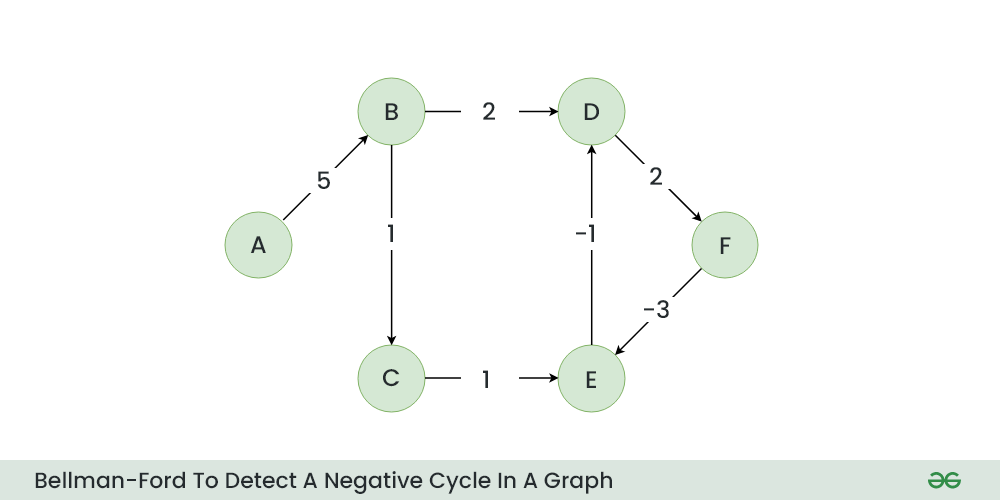
Graph G
Step 1:

Step 2:

Step 3:

Step 4:

Step 5:

Outcome: The graph contains a negative cycle in the path from node D to node F and then to node E.
Floyd Warshall’s Algorithm
The Floyd Warshall’s Algorithm is used to find the shortest path between any two nodes in a given graph. It keeps a matrix of distances between each pair of vertices.it will continue iterating the matrix until it reaches at a shortest path.
Algorithm:
1: Using the data about the graph, make a matrix.
2: By taking all vertices as an intermediate vertex, we have to update the final matrix.
3: It is to be noted that it includes at a time we pick one vertex, and we update the shortest path which includes this chosen vertex as an in-between point along the path.
4: When we select a vertex say k almost like the middle of the path, in previous calculations we have already taken all vertices P{0,1,2..,k-1} as potential middle points.
5: We have to consider the following subpoints while dealing with the source and destination vertices I,j respectively
- If vertex k is not the part of shortest path from I to j, we don’t have to change dist[i][j] value .ie, it will remain unchanged.
- If vertex k is indeed part of shortest path from I to j, update dist[i][j] to the sum of dist[i][k] and dist[k][j] but note that only if dist[i][j] is greater than this value we newly calculated.
Example: Consider the given graph G,
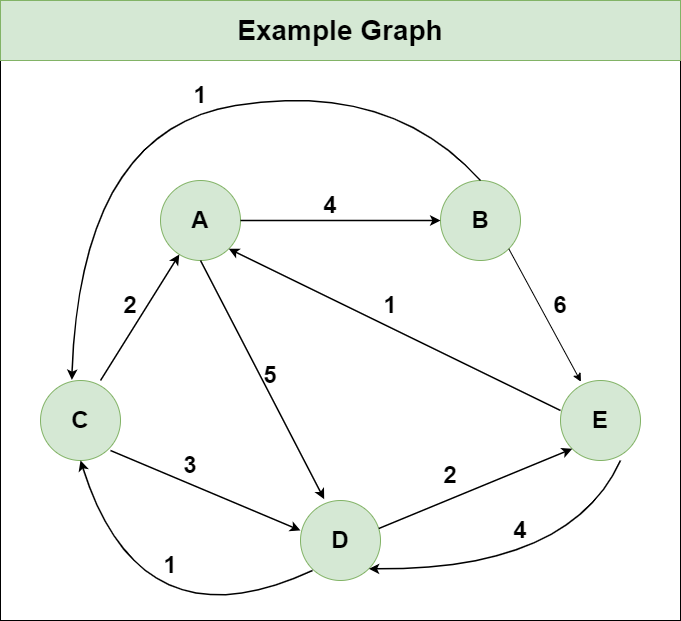
Graph G
Step 1:
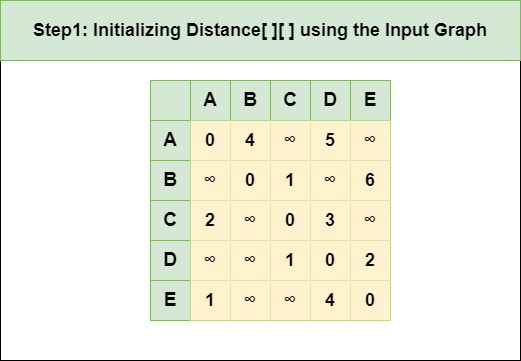
Step 2:
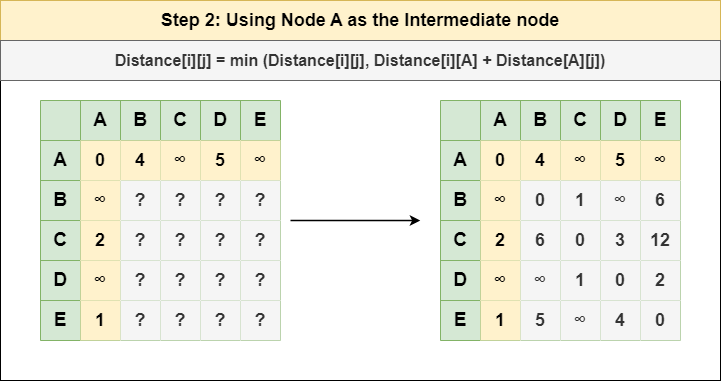
Step 3:
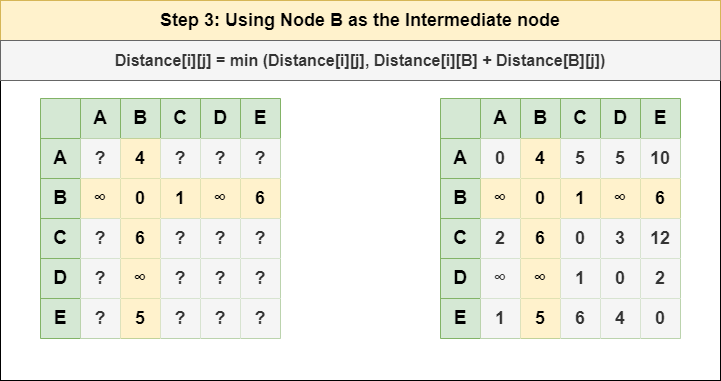
Step 4:
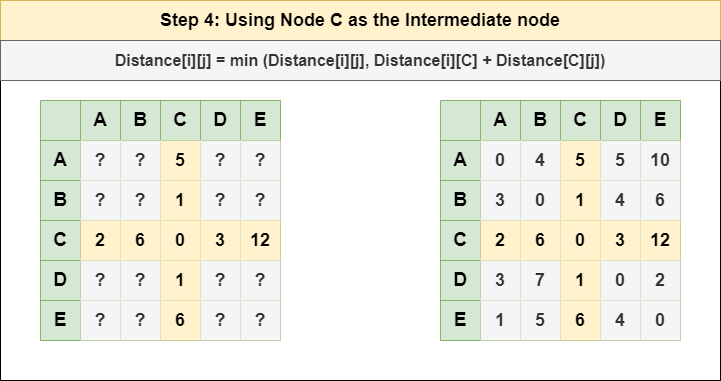
Step 5:
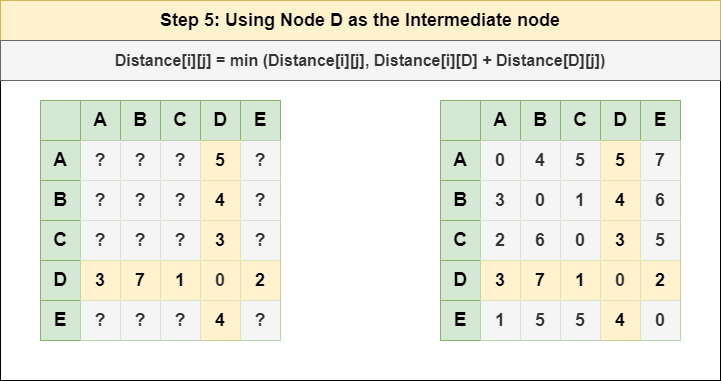
Step 6:
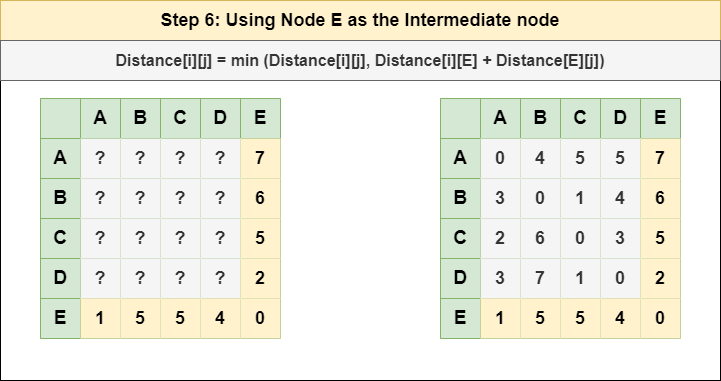
Step 7:
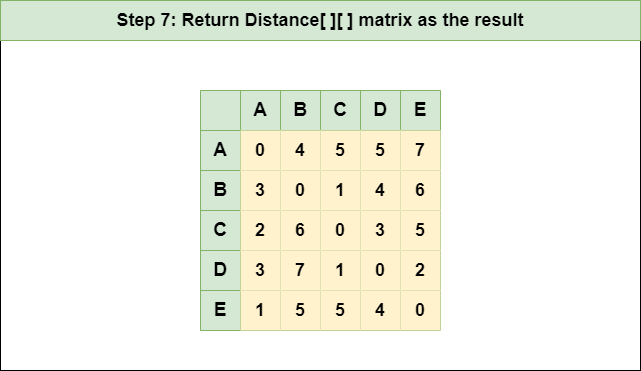
Shortest Path Algorithm in Computer Network – FAQs
What is Shortest Path Routing?
Shortest route In a network, routing is the process of using algorithms to determine the best path between a sender and a recipient while taking time, cost, and distance into account. To optimise data packet transmission in a network with numerous routers and subnets, this is essential.
What parameters are commonly used to measure distance in Shortest Path Routing?
When calculating distance, factors like the number of routers traversed, the geographic distance (in kilometres, for example), and other metrics like bandwidth, average traffic, communication cost, measured delay, and mean queue length can all be taken into account.
Share your thoughts in the comments
Please Login to comment...